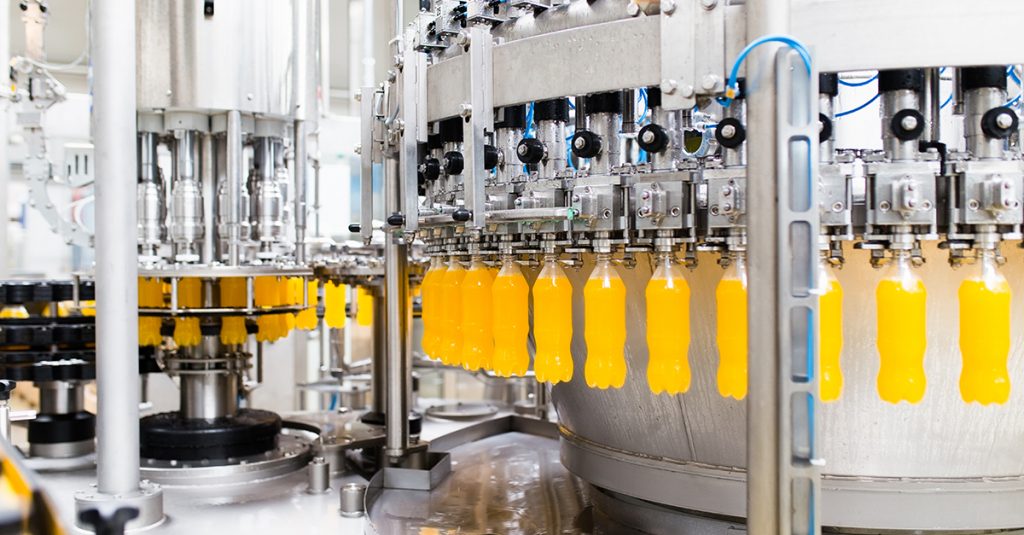When it comes to sealing food and beverage systems against leaks, contamination and malfunctions, meeting a product specification does not guarantee that seals will function as needed, two Freudenberg-NOK Sealing Technologies experts told a webinar audience in September. Freudenberg-NOK runs the business operations for Freudenberg Sealing Technologies in the Americas.
 Freudenberg’s David Clark, Operations Manager, Central Laboratory and with Ryan Fleming, Analytical Laboratory Manager, provided insight about the nature of elastomers, market trends like custom flavor combinations, regulatory requirements and the importance of material compatibility and advanced analytical testing. All of these factors must come into play when choosing the right material to produce effective elastomer components for food and beverage machinery, they emphasized during their Beyond a Spec: Choosing the Right Sealing Materials for Food and Beverage Applications webinar.
Freudenberg’s David Clark, Operations Manager, Central Laboratory and with Ryan Fleming, Analytical Laboratory Manager, provided insight about the nature of elastomers, market trends like custom flavor combinations, regulatory requirements and the importance of material compatibility and advanced analytical testing. All of these factors must come into play when choosing the right material to produce effective elastomer components for food and beverage machinery, they emphasized during their Beyond a Spec: Choosing the Right Sealing Materials for Food and Beverage Applications webinar.
“Today’s global industry means engineering for multiple markets and diverse regulatory compliance standards, which can be challenging and expensive, so it must be considered early,” said Clark. “Simply meeting a product specification does not ensure a seal will function."
As the beverage preferences of customers shift toward more flavored waters, teas, energy drinks and coffees, equipment manufacturers are faced with tough, new sealing challenges. Today’s drink dispensers play host to dozens of syrup and drink combinations that increase the complexity of industry issues like flavor transfer, use of multiple cleaning solutions and system leaks. Now, more than ever, advanced materials and robust product testing are required to meet industry performance expectations.
Clark and Fleming laid out why selecting the right materials is only the start of a successful project and why Freudenberg places so much importance on conducting its own rigorous and multi-faceted testing.
“There are multiple layers to achieving success, from considering operating conditions and regional specifics, to chemical compatibility and cleaning and sterilization factors, “ said Fleming. “Most seal suppliers have limited product testing capabilities and most equipment manufacturers are not elastomer experts. The key is combining the expertise of both to develop solutions that will work. This involves open, ongoing communications between the supplier and the customer.”
There are multiple layers to achieving success, from considering operating conditions and regional specifics, to chemical compatibility and cleaning and sterilization factors.
- Ryan Fleming, Analytical Laboratory Manager at FST
Equipment manufacturers frequently rely on simple immersion testing on sealing components to measure weight and swelling over time. But such tests do not provide sufficient data to determine if the component will actually work. Freudenberg offers customers a variety of globally-certified sealing materials and sophisticated testing capabilities to analyze and resolve food and beverage challenges.
The company offers customers a variety of globally-certified sealing materials, including its 70FKM727 low-temperature Fluorocarbon (FKM) material, its Fluoroprene XP family of highly fluorinated premium materials and its 70 EPDM 291 material.
Freudenberg also specializes in tests such as Compressive-Stress-Relaxation (CSR), Dynamic Mechanical Analysis (DMA), Tensile, Modulus and Elongation, Nuclear Magnetic Resonance to measure elastomeric state of cure and Gas Chromatography-Mass Spectrometry to measure and quantify the particularly touchy issue of flavor transfer. Flavor transfer occurs when fluid is absorbed into an elastomer or component and is later inadvertently released into a different fluid or flavor combination.
"We can help customers develop, analyze and install solutions that work."
- David Clark, Operations Manager Central Laboratory at FST

Ultimately, part performance is more important than a material specification, Clark concluded. Successful performance requires development of compounds based on polymers and raw materials that meet the physical properties required in the application and testing to determine meaningful material characterization.
“Sealing components aren’t high-profile but they are a critical consideration in meeting the demands of the food and beverage industry,” Clark said. “We can help customers develop, analyze and install solutions that work.”
Freudenberg’s webinar, Beyond a Spec: Choosing the Right Sealing Materials for Food and Beverage Applications, is available for viewing through September 2019 at here.
